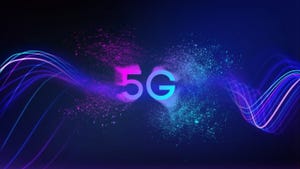Starlink ready for T-Mobile US launch with 100 direct-to-cell satellitesStarlink ready for T-Mobile US launch with 100 direct-to-cell satellites
Starlink has more than 100 satellites in orbit with direct-to-cell capabilities following its latest successful launch this week, putting it on track to launch services in the coming months.
July 4, 2024

The LEO satellite service provider's owner, Elon Musk's SpaceX, revealed that it had launched its latest raft of satellites on Wednesday.
In and of itself, that is not a major deal; as of a fortnight ago, SpaceX had averaged one launch of multiple satellites every 2.8 days in 2024 to date, according to Space.com. But crossing the 100 direct-to-cell satellites milestone is a noteworthy headline, particularly for anyone waiting for a satellite-based mobile service. Or, more specifically, a satellite-based mobile service that uses a regular smartphone, rather than a special satellite phone.
"With over 100 Direct to Cell satellites now launched, and 100s more planned to be launched this year, excited to provide ubiquitous connectivity to our customers starting with @TMobile in the US this year!" Senior Director, Satellite Engineering, co-lead Direct to Cell, at SpaceX Sara Spangelo posted on Twitter on Wednesday.
SpaceX announced a partnership with T-Mobile US almost two years ago, their shared goal being to provide ubiquitous coverage to mobile users in the US and further afield. The pair sent their first text messages in January, using the first few Starlink direct-to-cell satellites that were put into orbit just after the new year and the mobile operator's spectrum.
At the time, the companies indicated they would launch the service before the end of 2024, but did not provide a more specific timeframe than that. We still don't have an actual launch date, but Spangelo's comment above indicates that it could be imminent; the year is more than half over already, after all.
Initially, the direct-to-cell service will be restricted to text messaging, but the firms are working on adding in voice and data, possibly from next year. While T-Mobile has been a little vague on the details, Starlink itself said it would have the capability to offer voice, data and IoT services in 2025.
T-Mobile US is effectively serving as Starlink's reference partner, and it will be the first to launch services, but the satellite operator has brokered deals with other global telcos too. It has partnership arrangments in place with Rogers in Canada, Optus in Australia, One New Zealand, Japan's KDDI, Salt in Switzerland, and Entel in Chile and Peru. It has been touting for more business from the operator community, but has made no new partnership announcements lately.
The LEO market – and specifically direct-to-cell services – is hotting up. Globe in the Philippines recently announced it has extended its partnership with Lynk on a direct-to-cell service, or Sat2Phone, to use Lynk's preferred branding. The companies plan to launch a live customer pilot programme later this year.
On a related, note, Amazon's Project Kuiper has just got the go ahead to begin testing in France from regulator Arcep, L’Informé reported on Tuesday.
Like many others, the news outlet describes Project Kuiper as a new major competitor to Starlink, despite the fact the company is well behind in the space race. Last week Amazon formally opened its manufacturing facility in Kirkland, Washington, that will help it get more than 3,000 LEO satellites into orbit in the next few years, but at the same time it disclosed that its first satellite launches will come in the fourth quarter of this year and the first customer connections in 2025, which is a little later than initially predicted.
Further, Project Kuiper is not looking at the direct-to-cell space, or at least not yet. Starlink does have a number of competitors in that field though – Verizon recently teamed up with AST SpaceMobile, for example, just as rival AT&T has done – and as such it and T-Mobile are keen to get their services into customers' hands as soon as possible.
The launch of those latest direct-to-cell satellites and the prospect of more to come can only help with that endeavour.
About the Author
You May Also Like










.png?width=300&auto=webp&quality=80&disable=upscale)


_1.jpg?width=300&auto=webp&quality=80&disable=upscale)